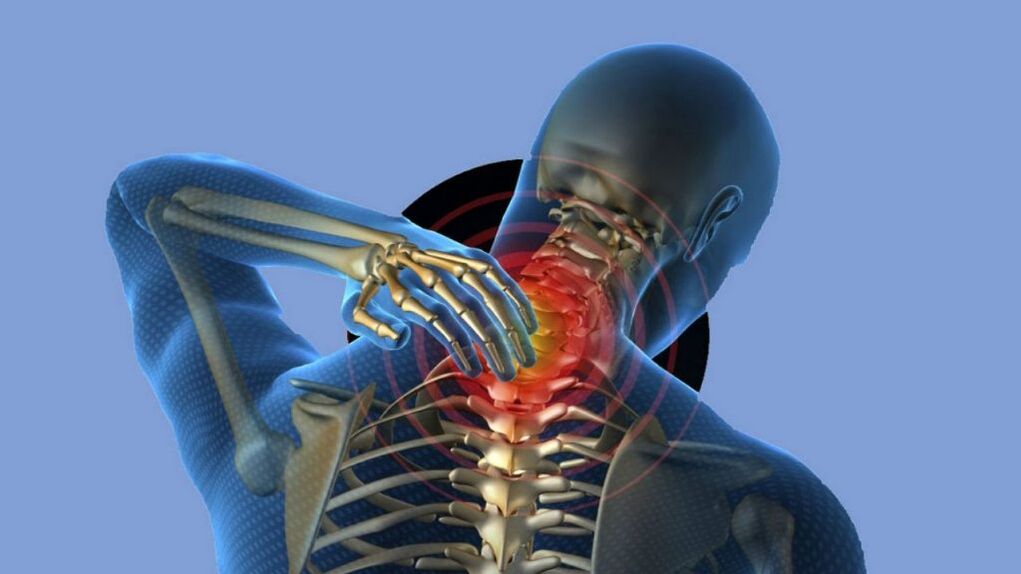
Under the osteochondrosis of the cervical spine implies a degenerative-degenerative pathology that affects the discs located between the vertebrae.The disease is mainly diagnosed in people from 30 to 50 years, but can occur at another age.It is important to timely identify the pathology and do proper treatment.If this is not done, the disease will move to a new stage of development, which can cause the need for surgical intervention in order to replace the intervertebral discs with prosthesis.
Causes of the disease
Neck osteochondrosis occurs for the following reasons:
- sedentary lifestyle;
- Obesity;
- Improper food;
- Previously suffered spinal injuries, especially if the segments of the cervical region were damaged;
- excessive physical activity;
- Stay in the same position with a prone head for a long period - therefore, pathology is often diagnosed in office employees working on the computer;
- genetic predisposition;
- unstable emotional background;
- neck hypothermia;
- autoimmune pathologies, as a result of the development of which the cartilage tissue is damaged;
- Incorrect structure of the spine diagnosed by birth.
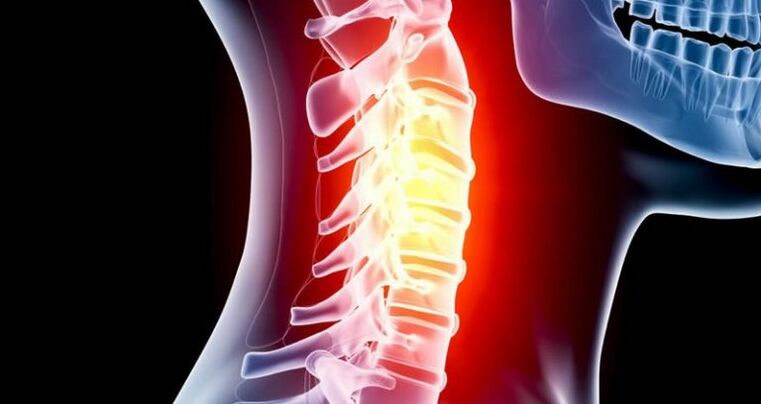
The development of osteochondrosis of the cervical region is also facilitated by a genetic predisposition.
The rate and type of illness
Cervical osteochondrosis passes through several stages of development, each of which has a certain symptoms:
- First phase disease.This is the beginning of the development of pathology.The patient has pain in the affected area, which intensifies during movement.This stage is also characterized by back muscle tension and rapid fatigue.The pathology at this stage does not need therapy.The disease can be eliminated using the correct energy system, exercise therapy and abandoning harmful addictions.
- Second stage of pathology.The disease progresses, affecting the intervertebral discs.Their height decreases, which leads to a decrease in the distance between the vertebrae and the nerve clamps.As a result, the pain syndrome becomes more pronounced.He intensifies when his head moves and gives his shoulders or hands.Such symptoms also appear - inattention, fatigue, pain in the head area.For the treatment of pathology, the medication is prescribed.
- The third rate of the disease.The hernia of the intervertebral discs begins to form.Pain syndrome has improved.The pain is located in the neck and head and gives the shoulders and hands.Dizziness occurs, the patient is weak.The neck loses mobility.Especially acute adhesion is felt in the morning.
- The fourth stage of the disease.The intervertebral discs are completely destroyed.Their place is occupied by connective tissue.The pain intensifies and does not disappear even during sleep, the neck almost completely stops return, dizziness becomes more frequent, the patient loses coordination of movements, and there is noise in the ears.
Clinical
Schop osteochondrosis manifests itself in different ways, depending on the lesion of specific segments.However, there is a general symptom characteristic of damage to any departmental beads:
- Headache syndrome, giving the chest, arms, shoulders;
- vision of vision and hearing;
- Crunch when moving the neck;
- numbness of the fingers of the upper extremities and the bottom of the tongue;
- weakness in the muscles of the arms, legs;
- Increased blood pressure.
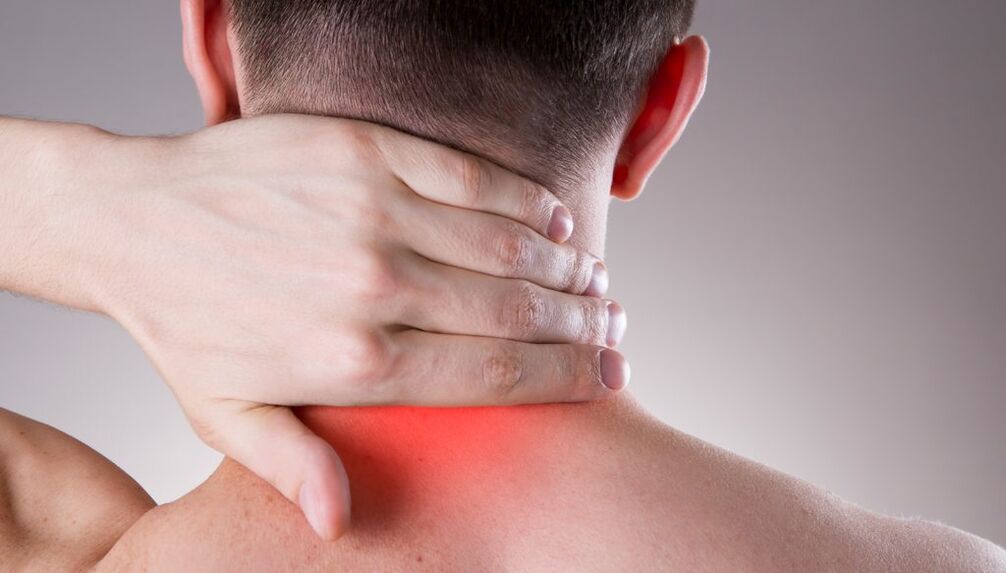
The pathology is also characterized by certain syndromes, each of which is discussed in detail below.
Radio syndromes
With cervical osteochondrosis, the nerves are stuck, as a result of which a leaking pain syndrome occurs.The pain gives the shoulders and hands.The following symptoms also appear:
- Small pimples at the base of the hair in the epidermis, which in ordinary people call a goose;
- tingling;
- loss of elasticity and elasticity of the epidermis;
- swelling of soft tissue;
- Disinclosure of the skin.
Vail artery syndrome
Is characterized by the following symptoms:
- Chili or pulsating, persistent or paroxysmal pain, which intensifies when the head moves or stays in a long -term position;
- dizziness and pallor;
- nausea;
- loss of movement coordination;
- noise in the ear and deterioration of hearing;
- eye pain;
- Vision of Vision.
Migraine syndrome
If osteochondrosis of the cervical spinal column occurs, this can lead to the appearance of cervical migraine syndrome.In this case, the sympathetic column joints are irritated.As a result, there are problems with brain vessels and blood circulation.This leads to a regular increase in blood pressure characterized by the following symptoms:
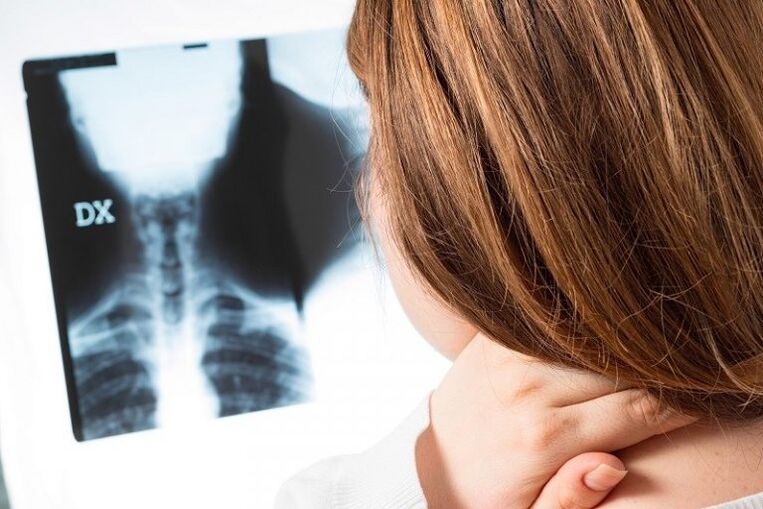
- heartbeat;
- noise and bell in the ear;
- The hearing deteriorates.
Hypertension syndrome
If the cervical spine osteochondrosis provoked the appearance of hypertension syndrome, then the patient increases intracranial pressure.Such symptoms appear:
- explosion pain;
- nausea with vomiting;
- Increased body temperature.
When examining the blood, there will be an increase in the rate of erythrocyte resolution.
Troubleshooting
To diagnose pathology, instrumental research and laboratory tests are described.
Useful
If signs of osteochondrosis of the cervical region occur, it is recommended to consult a doctor.Only a specialist can diagnose a pathology.For this, a professional describes such instrumental research:
- X -Ray.Such a study has rarely been described, as it does not provide a complete idea of developing pathology, especially in relation to the 4th stage of the disease.
- CT helps to identify the changes that have occurred in the beads.However, this study cannot determine the presence of hernia between segments, which means that it does not mean anything for their shape and size.
- MRI helps to identify any spine violations, including intervertebral hernias.
- Duplex ultrasound.Such a study is described if there is a doubt about problems with blood circulation in the neck vessels.Duplex ultrasound will indicate the presence of blood flow disorders, as well as obstacles that interfere with normal blood flow.
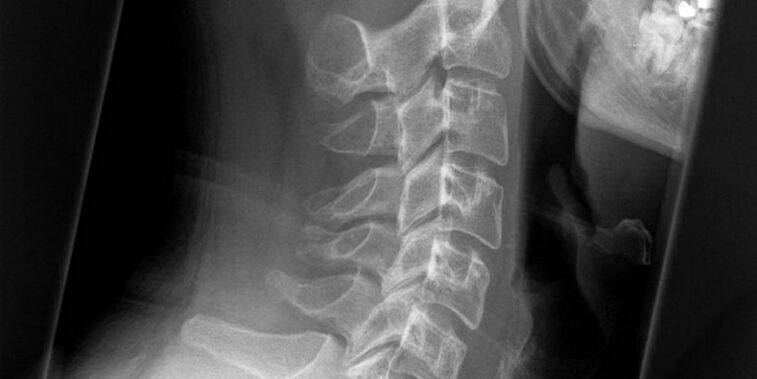
Laboratory
With the cervical osteochondrosis, a general and biochemical blood test has also been described.Such studies do not help diagnose the pathology, but the doctor can determine the patient's health as well as obtain information about the inflammatory process.
Traditional
Treatment of osteochondrosis of the cervical spine is prescribed by a physician.Therapy is very difficult and requires a long period.Treatment is aimed at preventing the development of the disease and eliminating symptoms.For this, medicines, physiotherapy, exercise therapy and other procedures have been prescribed.If conservative therapy did not produce the desired result, surgery is performed.
First aid for irritations
First aid should be offered to the patient if he experiences severe, unbearable pain and if his neck is blocked in one position.It is recommended to call an ambulance team immediately, and before the arrival of specialists, you should do the following:
- Rub an analgesic oil in a sore place.
- Give the patient an analgesic.
- To make a compression with camphor - this will help restore joint mobility, improve blood microcirulation and relieve pain.
Before the arrival of doctors is impossible:
- Try to do a massage for the patient.A wrong move will lead to a deterioration of the situation.
- Rub the heat oil in the damaged segment.If the pathology is associated with an inflammatory process, then the use of such a means will lead to a deterioration of the situation.
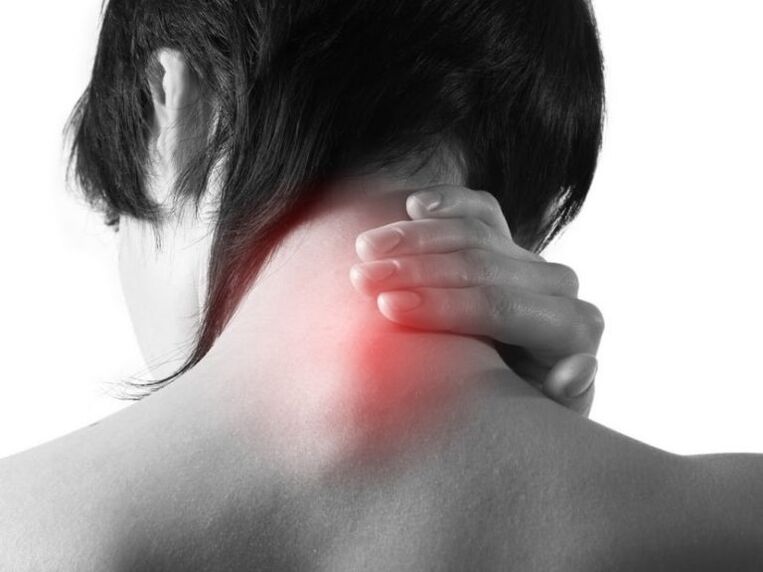
Emergency specialists to reach or solve the problem in the country or take the patient to the hospital.Treatment of cervical osteochondrosis will be prescribed after diagnostic measures.Usually, after first aid, the patient is discharged into the house in order to suffer on outpatient therapy.
potion
The treatment of cervical spine osteochondrosis is based on the use of such medicines:
- Non -steroidal agents with anti -inflammatory properties.Such medicines get rid of the symptoms of the disease.Funds also stop the inflammatory process and maintain the traumatic nerve from swelling.The tablets are consumed 2-3 times daily after eating.The duration of therapy is 2-3 weeks.
- Musorelaxants.They get rid of muscle spasm and muscle tissue tone.
- Corticosteroids.These are hormonal medicines.Tools are prescribed only if other medicines have proven their inefficiency.Medicines have a large number of contraindications and side effects, so you can use them for therapy only as prescribed by a doctor.
- Diuretics.Relieve the body from excess fluid.Thanks to this, the medicines contribute to the removal of soft tissue swelling at the site of the inflammatory process.
- Blocks.Doctors usually prescribe subcutaneous or intramuscular drugs.The drug is administered at several points in the area of damaged vertebrae.This allows you to stop the pain syndrome.
- Chondroprotectors.They stop the development of pathology and contribute to the reset of the damaged cartilage.
- B vitamins of B. improve metabolism and neuromuscular conductivity.
Surgical
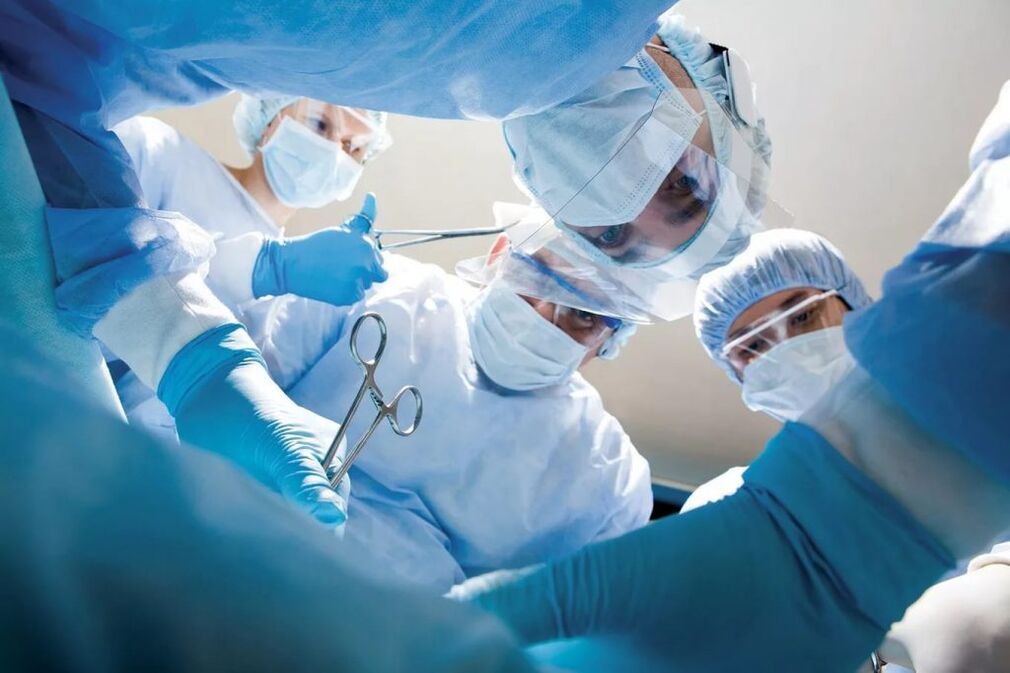
Surgical intervention is described in the last stages of the development of the disease and only with the ineffectiveness of conservative therapy.The evaluation of the treatment result is performed in six months.In the absence of effect, surgical intervention is performed.Surgery may be described earlier if unbearable pain or limb paralysis occurs.
Gymnastics
The treatment of home pathology is based not only on the use of medicines but also on the performance of special exercises.Exercise therapy is prescribed by a doctor.Classes are carried out only during the period of forgiveness of the disease.To get rid of the intervertebral pinch, it is recommended to perform such exercises:
- It lies in the stomach with accent on the floor, the head and body is raised.The exercise is repeated 2-3 times with fixing on top of 2-3 minutes.
- Lying in the stomach, they perform recurrence in one and the other, touching the floor of the floor.The number of repetitions is 7 in each direction.
- Sitting on the floor, bend forward on the chest chin, after which they bend back, throwing their heads back.Exercise is performed 10-15 times.
- Sitting placed their palms on the forehead and press.Then press the head in the palm of your hand.The number of repetitions is 2-3.
- Standing, they rotate their heads first in one, then in the other direction.The number of repetitions is 10.
Physiotherapy
To get rid of the cervical osteochondrosis, physiotherapeutic procedures have also been described.Such treatment helps to get rid of the symptoms of the disease and helps restore damaged cartilage.The following procedures are usually determined:
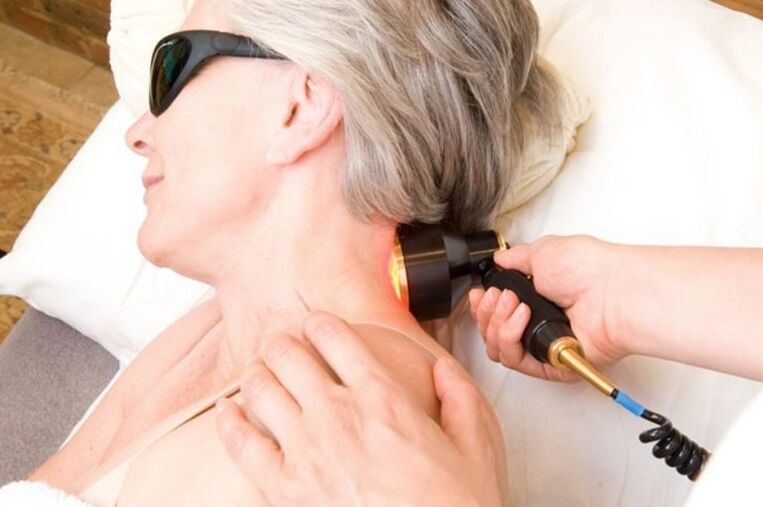
- Laser therapy.The essence of the method is the effect of laser on the affected areas of the spinal column.This improves blood microcirculation and stops the inflammatory process.
- Electrophoresis.The procedure is performed with sedatives against sedatives.The essence of the method is the effect on the damaged parts of the body with a small load of electric current for passing the ions along with the medicines in the damaged area of the spine.
- Ultrasound.The procedure improves the metabolic processes that occur in cells, stops pain syndrome and stops the inflammatory process.
- Magnetotherapy.It relieves swelling of soft tissue and eliminates pain syndrome.
To increase the effectiveness of therapy, alternative treatment methods can also be described:
- Massage of the cervical area-brother;
- manual therapy;
- acupuncture and other procedures.
Food
Treatment for cervical osteochondrosis will be ineffective if you do not comply with certain nutritional rules.The diet will help:
- Avoid the appearance of lack of useful substances, as vitamins and minerals are involved in the metabolic processes of intervertebral disc cells;
- normalize body weight, which will reduce the load on the spinal column;
- To minimize the probability of sclerotic changes in the blood vessels, thereby reducing the risk of damaged blood supply to the brain.

Basic principles of proper nutrition for cervical osteochondrosis:
- The diet should be balanced with the daily dose of kilocalories-1200-1500;
- Food is taken in small portions 5-6 times a day;
- Observe drinking mode to prevent dehydration of intervertebral discs - at least 1.5 liters of liquid are drunk per day;
- Limit salt consumption, as it stores fluid in the body, provoking the appearance of tissue swelling;
- Limit consumption of starch and flour products;
- Exclude fat, fried, spicy, smoked by the diet;
- Refuse to use alcohol and sparkling sweet drinks as well as store liquids in the box;
- Fresh vegetables and fruits, lean meat, lean varieties of fish, cereals, milk and sour dairy products with a minimal portion of fat content are introduced into the menu.
Tibetian
Even with cervical osteochondrosis, doctors recommend using a Tibetan applicant to improve the condition.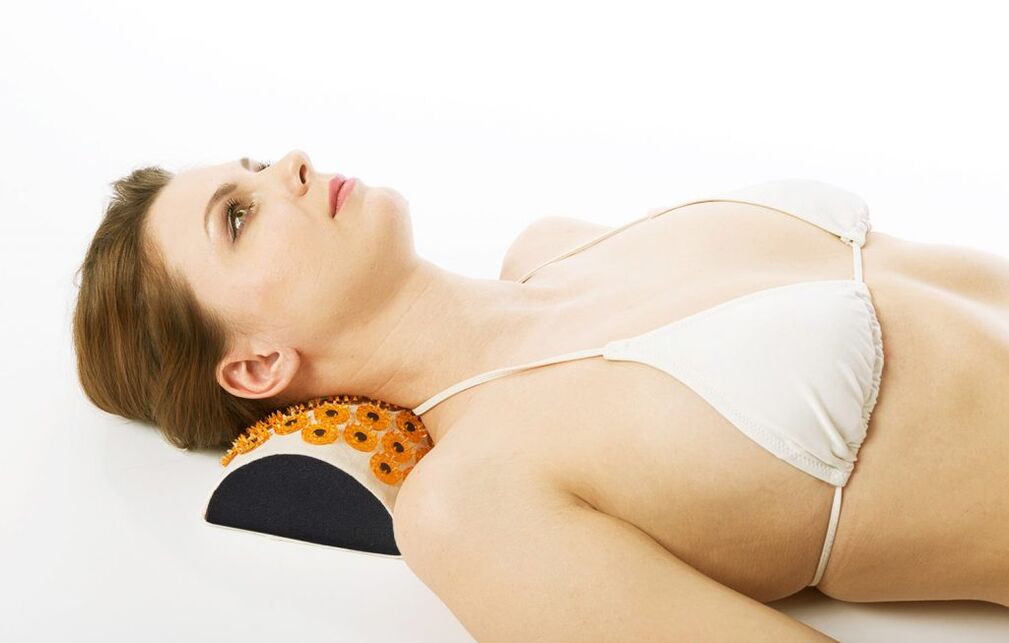 This is a plastic -made rivet device, which affect the epidermis.The patient applies the applicant to the problem area and occupies a lie position.As a result, the epidermis receptors participate in the physiological processes of the body are upset.
This is a plastic -made rivet device, which affect the epidermis.The patient applies the applicant to the problem area and occupies a lie position.As a result, the epidermis receptors participate in the physiological processes of the body are upset.
This procedure gives the following result:
- Sleep direction is normalized, quality and duration of night rest improves;
- Pain syndrome stops;
- Blood microcirulation improves;
- The motility of the joints is reset;
- Performance has increased.
The Tibetan applicant has contraindications:
- The pathology of the epidermis;
- diseases provoked by infections;
- Vascular diseases;
- Oncological pathologies of a malignant nature.
You can only use the device after consulting a specialist.
Popular treatment
The use of non -traditional medicines is another way to treat cervical osteochondrosis.Such drugs are used only with a doctor's permission.Public medicine increases the effectiveness of medication therapy.For the treatment of the disease, it is impossible to use as independent medicines.Below are the recipes for the preparation of non -traditional medicines for the treatment of osteochondrosis.
Cabbage
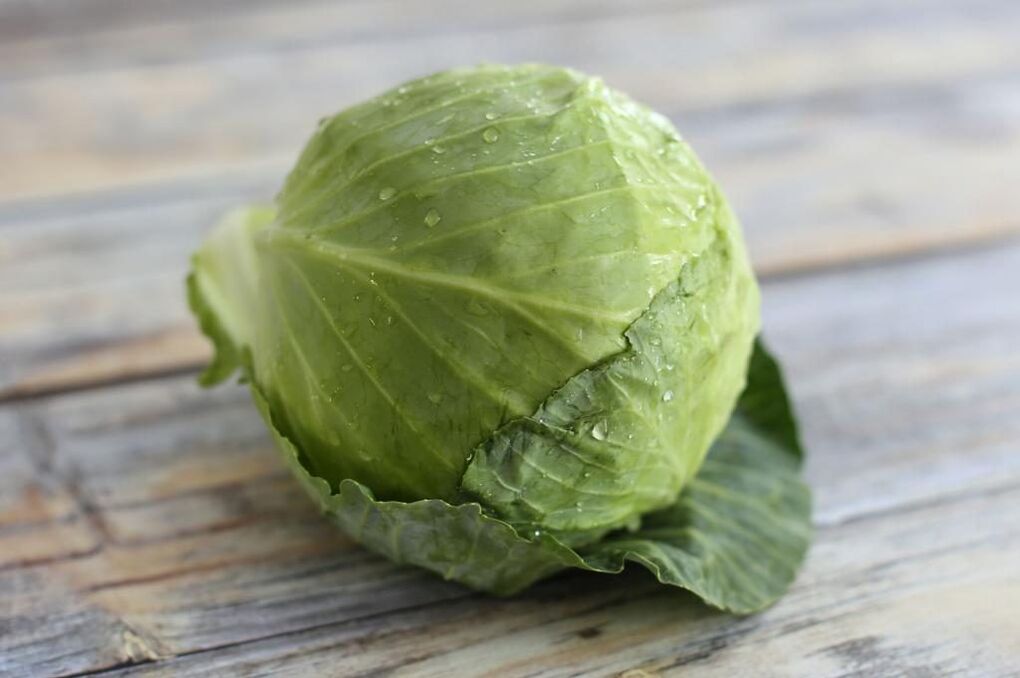
A leaf of fresh cabbage is slightly beaten with a softening hammer.After that, it is fixed to the problem area and isolated.The compresses are held for several hours.The procedure is performed daily.Instead of the cabbage leaf, you can use horseradish leaves.
Hop -based oil
Ingredients needed:
- Hop cones chopped into the powder - 1 large tsp;
- Butter - 1 large tsp.
The products are connected and mixed.The resulting composition is treated with the affected area and regulates the insulation bandage.The compression is held from a few minutes to several hours.The procedure is performed daily.Ointment is stored in the refrigerator.
Comppress of honey cards
Ingredients needed:
- Raw chop potatoes - 1 large spoon;
- Heart - 1 large tsp.
The components are mixed and placed on a piece of gauze.The compression is fixed to the problem area for 20 minutes.The procedure is performed once every 7 days.
Prevention of the disease
The following preventive measures will help to avoid the occurrence of pathology:
- Run an active lifestyle - playing sport, better swimming;
- enrich diet with magnesium and calcium -containing products;
- Several times a day do a warm job during sitting work;
- Use the orthopedic bed for night rest;
- Take a hot shower daily for 10 minutes;
- abandons excessive physical exercise;
- Visit a doctor regularly and perform the treatment of pathologies in a timely manner, which can provoke the appearance of cervical osteochondrosis.
What is the dangerous osteochondrosis of the neck
The main risk of the disease is that the lack of timely and qualified therapy can provoke complete immobilization of the joints, which leads to disability.In addition, pinching of cervical vertebrae adversely affects the blood supply to the brain.As a result, headaches and other appropriate diseases occur.For this reason, you cannot ignore the pathology.
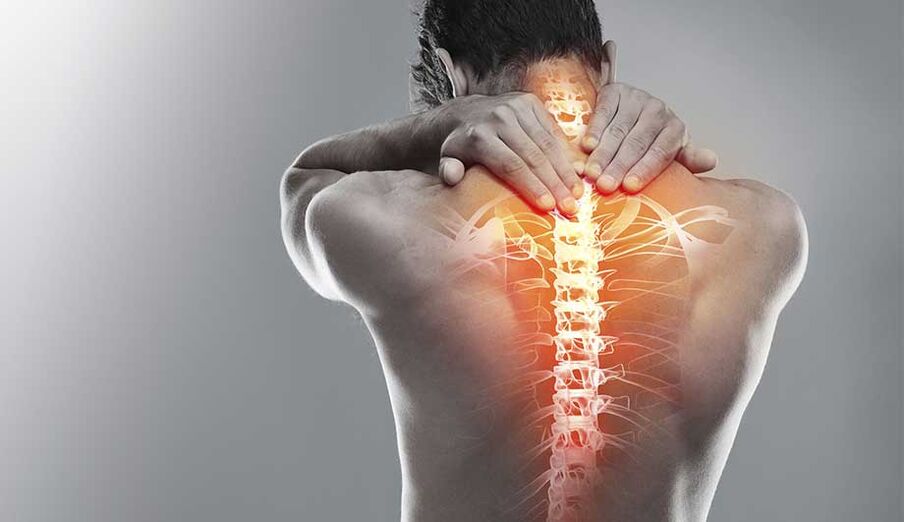
Cervical osteochondrosis is a spinal pathology, which in the absence of qualified time therapy leads to sad consequences.To prevent this from happening, it is recommended to consult a doctor after the first symptoms of the disease.














































